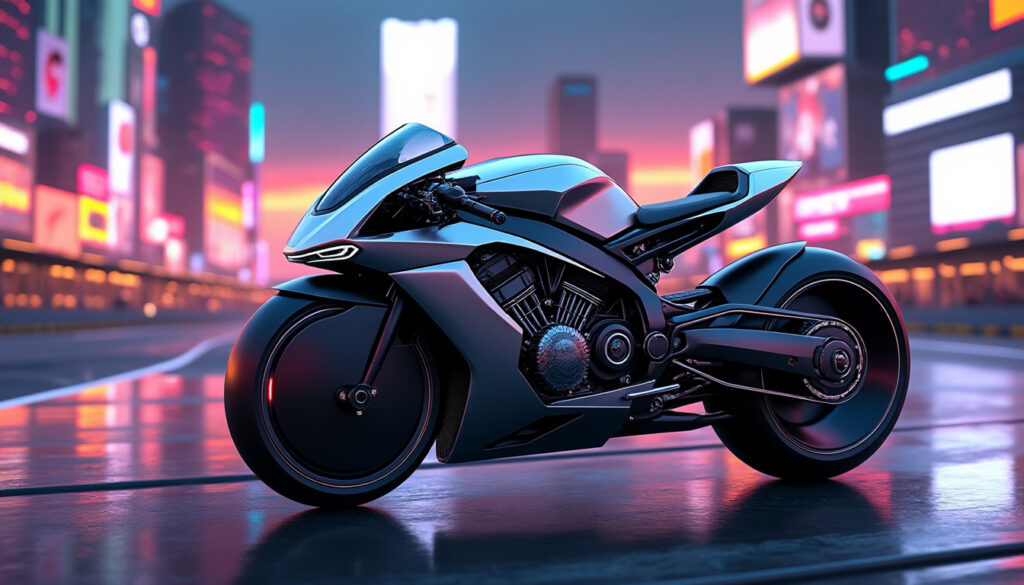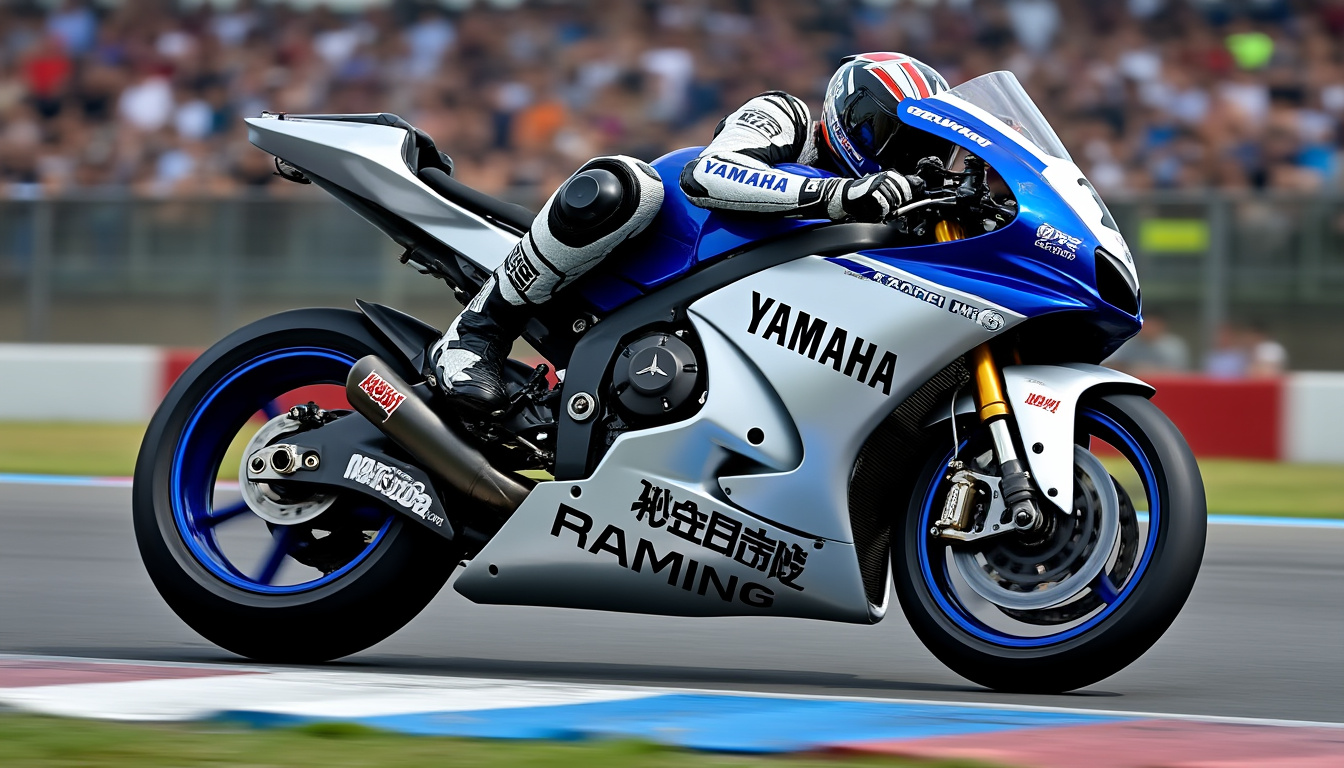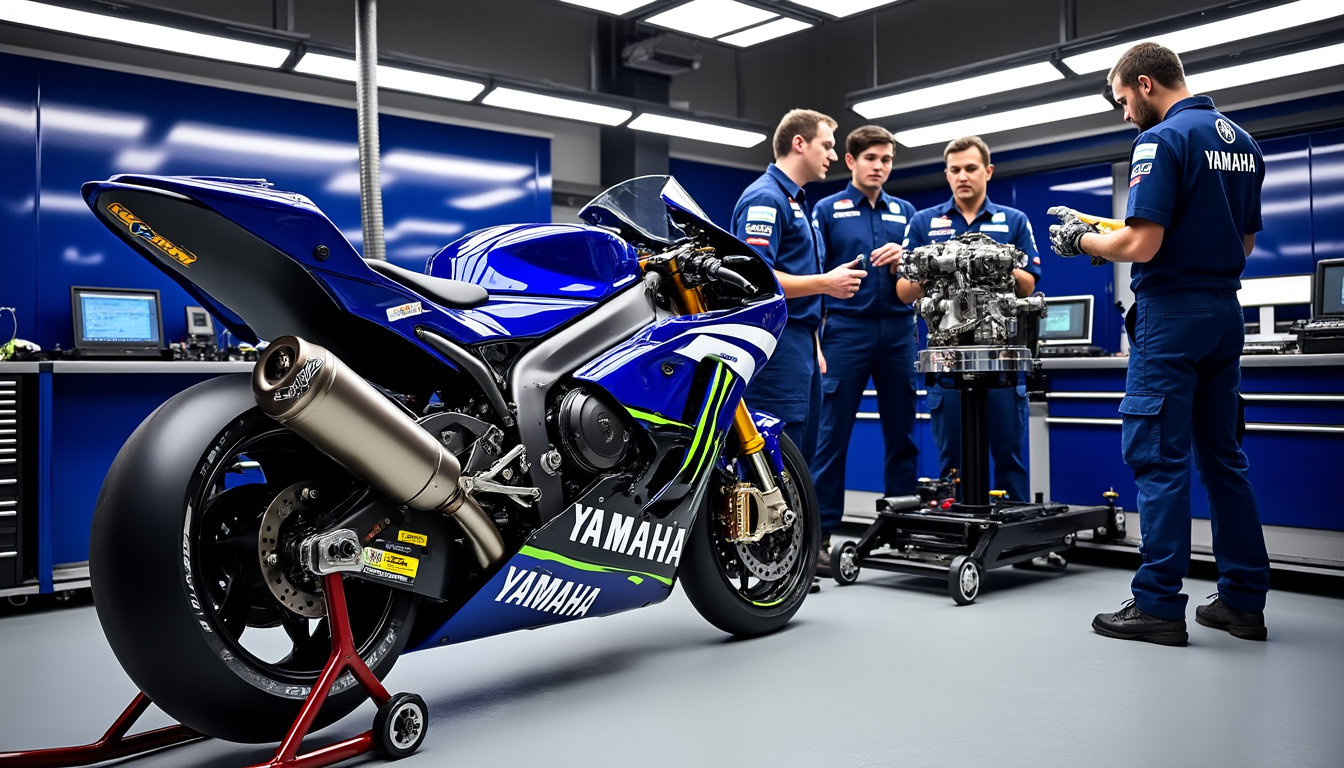Pavesio evokes Yamaha's V4: "our goal is to be ready for a surprise participation"

In the dynamic world of MotoGP, technology and innovation are key factors that determine the success of teams. Yamaha, with its long heritage, is no exception, and the recent announcement regarding the development of its V4 engine is fueling discussions among enthusiasts and experts. Paolo Pavesio, the director of Yamaha Motor Racing, highlighted the brand's goal, which is to prepare for a "surprise entry" by integrating this revolutionary engine into its MotoGP fleet. This article explores the implications and expectations surrounding this announcement, as well as the current state of MotoGP racing.
- Context and history of Yamaha in MotoGP
- The technical challenges of developing the V4 engine
- Comparison with other engine configurations in competition
- Sport and competitions: the importance of innovation in MotoGP
- The future of Yamaha in MotoGP with the V4 engine
Context and history of Yamaha in MotoGP
Since its inception in MotoGP, Yamaha has always been known for its inline four-cylinder engines. This architecture, while high-performing, is starting to show its limits, especially in the face of fierce competition. Vox, echoing Pavesio's words, states that Yamaha wants to transcend these limits. The company has won numerous championships and has benefited from legendary riders such as Valentino Rossi and Fabio Quartararo. However, Suzuki's withdrawal has left Yamaha as the last manufacturer riding on an inline four-cylinder configuration.

While Ducati, Honda, KTM, and Aprilia have embraced V4 engines, Yamaha has opted for continuity. This choice has resulted in mixed results in recent seasons. Since Quartararo's victory in 2022, Yamaha has struggled to regularly return to the podium, raising questions about its strategy. Despite its recent successes, the brand has not managed to capitalize. This illustrates how ruthless and competitive MotoGP has become.
The need to transition to a V4 engine
The decision to develop a V4 engine is not merely a design issue but a strategic imperative. Yamaha must adapt to technological evolutions and the growing expectations of fans and engineers. Among the potential advantages, we find:
- Increased power: V4 engines are generally more powerful, thus offering a better power-to-weight ratio.
- Better handling: The V4 structure can provide a better weight distribution, improving the handling of motorcycles on the track.
- Energy recovery: The electronic management systems of V4 engines can optimize energy recovery, essential for a high-performance sport.
These advantages are crucial in the context of the challenges the current competition poses for each manufacturer. With enhanced performance, Yamaha hopes not only to regain its standing in the pack but also to assert itself as a technological leader on the grid.
The technical challenges of developing the V4 engine
Developing a new engine, especially within the demanding framework of MotoGP, raises numerous technical challenges. Paolo Pavesio highlighted that while Yamaha has ambitious plans, refining the V4 engine and ensuring it meets expectations—in terms of performance and reliability—takes time. One of the major challenges is the development timeline. The integration of new technology requires rigorous testing.

Technical aspects concerned
Here are some technical aspects that concern MotoGP engineers:
- Reliability: MotoGP races are ruthless, and a failure could cost dearly in championship points.
- Thermal efficiency: The engine must operate efficiently at extreme temperatures to avoid performance loss.
- Dynamic performance: Optimizing power and torque for different circuit configurations is essential.
The testing of the V4 engine by *Augusto Fernández* in Valencia is a crucial step. While he noted that the project is still in its early stages, the initial results could provide a solid foundation for future developments. As is already known, competition will not wait, and any delay could spell lost opportunities.
Comparison with other engine configurations in competition
With the integration of the V4 engine into its future motorcycles, Yamaha must also face competitive configurations from other manufacturers that already use this technology. The choice of engine configuration significantly influences the overall performance of the motorcycle. Therefore, Yamaha must thoroughly analyze how its V4 can compete with those of Ducati or Honda.
| Manufacturer | Type of engine | Strengths | Weaknesses |
|---|---|---|---|
| Yamaha | Inline 4 cylinders (current) | Lightweight, maneuverability | Power reduction |
| Ducati | V4 | Power, acceleration | Technical complexity |
| Honda | V4 | Stability, power | Maintenance cost |
| KTM | V4 | Agility, cornering performance | Limited experience |
Through this comparison, it is clear that each manufacturer has optimized its machine based on recent test sessions and data analysis. It will be crucial for Yamaha not only to create a powerful engine but also to establish a balanced package that integrates performance, innovation, and reliability.
Sport and competitions: the importance of innovation in MotoGP
In the context of MotoGP, teams are constantly seeking innovation. The development of the V4 engine by Yamaha is a factor that could disrupt not only their strategy but also the general landscape of MotoGP. Competition is intense and results are often the outcome of in-depth research, track testing, and technological innovations.
Innovation and performance
Riders no longer have the time to wait for their manufacturer to develop new technologies. Performance demands are high, and the need to stand out is pressing. Competitive advantages can be determined by:
- Energy recovery technology: Energy efficiency can make a difference in a lap time.
- Advanced electronics: Engine management must be perfect to avoid any loss of performance.
- Lightweight materials: Weight reduction plays a crucial role in maintaining performance.
Yamaha is leveraging these factors to ensure that its motorcycles are not only cutting-edge but also ready to compete with others. Pavesio's involvement also indicates a greater accountability to restore Yamaha's reputation as an innovator in the racing field. Who knows, with the right adjustments and a high-performing V4 engine, Yamaha could return to the forefront as early as 2025.
The future of Yamaha in MotoGP with the V4 engine
It is undeniable that the development of the V4 engine is a turning point for Yamaha in MotoGP. While Pavesio maintains that the goal is to be ready for a surprise, many wonder if this surprise can materialize quickly. Augusto Fernández's test is the first stone of an ambitious project, which could change the game in the near future.
Towards a surprise entry
Yamaha's ambitions go beyond a simple return to competition. The idea of a "surprise entry" signals a willingness to reinvent itself. This underscores that, in such an exciting competitive world, every manufacturer must be agile and responsive. For Yamaha, its investments in the development of the V4 could bring a fresh impetus.
- Continue developing the prototype: It is crucial to test and refine the engine to meet performance standards.
- Commitment of riders: The return of top-level riders is crucial to leverage the new technologies.
- Race schedule: Preparation must align with the calendar to maximize testing opportunities.
By pursuing this creative instability, Yamaha could not only reclaim its historical competition pedigree but also dare to dream of a bright future in MotoGP. A future where victory and innovation meet.
Source: www.motogp.com
Leave a Reply


Articles relatifs